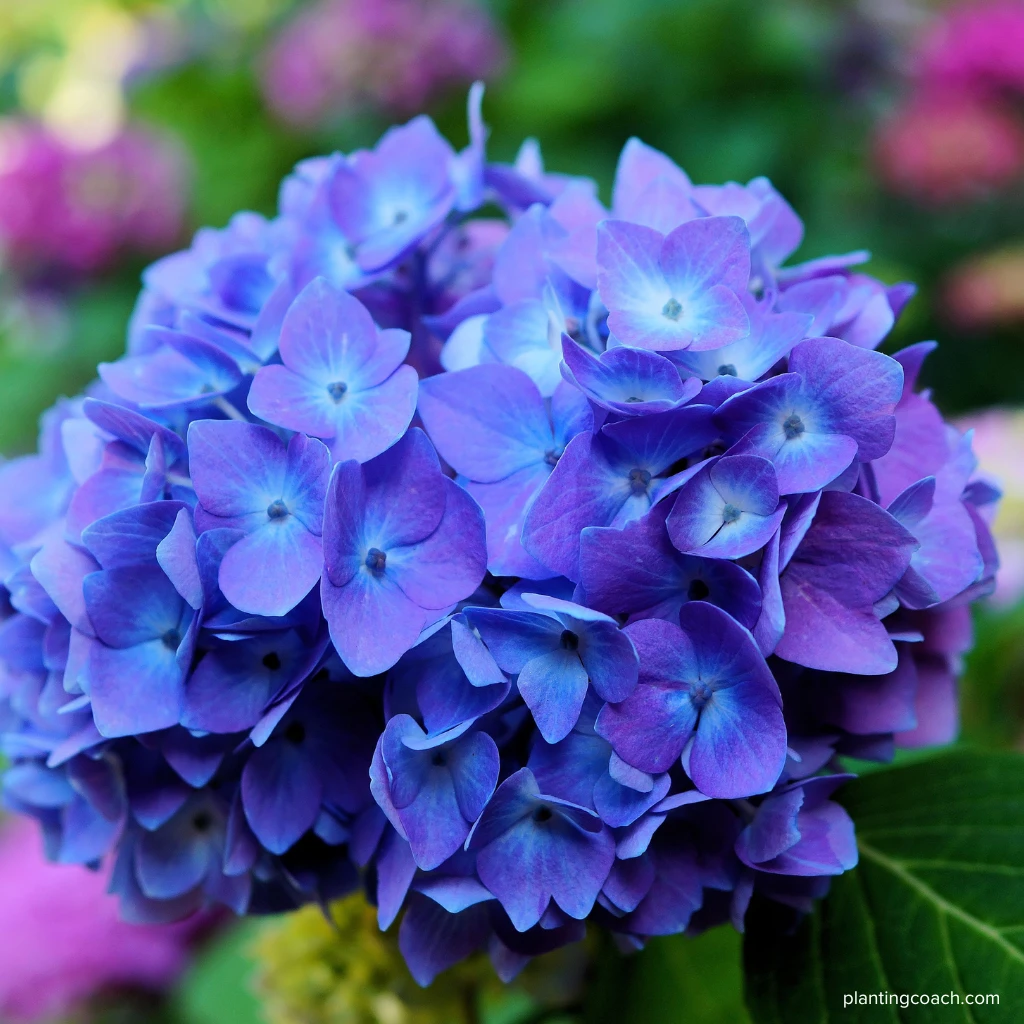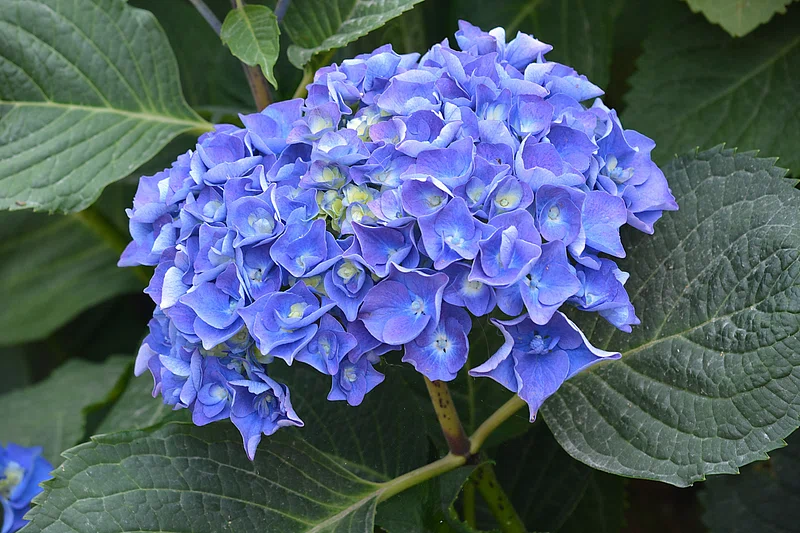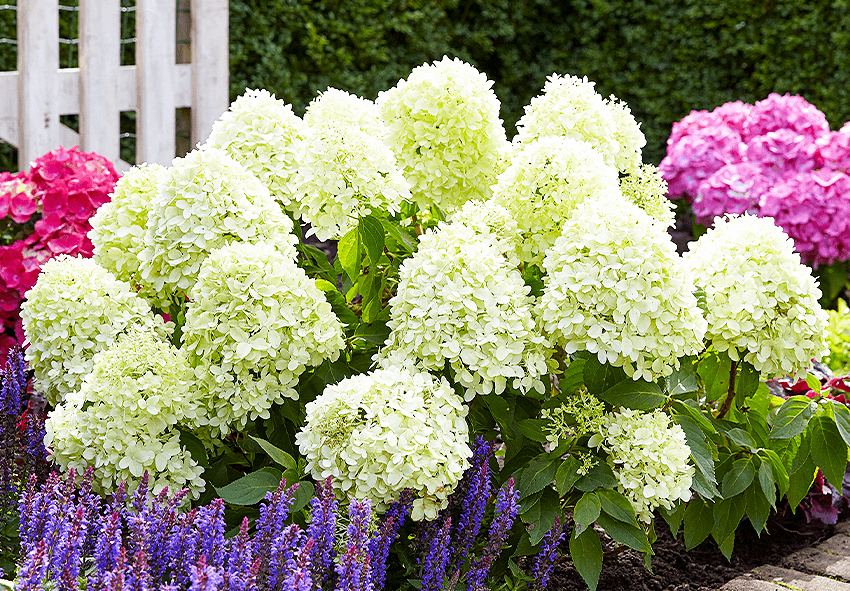The Enduring Allure of Hydrangeas: A Comprehensive Guide

Hydrangeas, with their captivating clusters of blooms and lush green foliage, have graced gardens and landscapes for centuries. These deciduous shrubs, belonging to the Hydrangeaceae family, are celebrated for their diverse flower colors, shapes, and sizes, making them a favorite among gardeners of all levels. From the classic mopheads to the delicate lacecaps and the charming panicles, hydrangeas offer a visual feast throughout the growing season. This article delves into the fascinating world of hydrangeas, exploring their history, varieties, cultivation, care, and common challenges, offering a comprehensive guide to help you cultivate these stunning plants successfully.
A Journey Through Time: The History of Hydrangeas
The history of hydrangeas is as rich and varied as their blooms. Originating in Asia, primarily Japan and China, hydrangeas have been cultivated for centuries, initially valued for their medicinal properties before their ornamental beauty captivated the world. The name "hydrangea" itself, derived from the Greek words "hydor" (water) and "angeion" (vessel), hints at the plant’s love for moisture.
Hydrangeas made their way to Europe in the late 18th century, thanks to intrepid explorers and botanists who brought back specimens from their expeditions. The Hydrangea macrophylla, the most popular type, quickly gained popularity among European gardeners and became a staple in grand estates and cottage gardens alike. The Victorians, in particular, were enamored with hydrangeas, using them as symbols of heartfelt emotions, ranging from gratitude to understanding.
Over time, plant breeders have tirelessly worked to develop new cultivars with improved bloom color, size, and hardiness, resulting in the vast array of hydrangea varieties available today. Modern hydrangeas are now grown worldwide, adapting to various climates and soil conditions, bringing their timeless beauty to gardens across the globe.
Unveiling the Diversity: Exploring Hydrangea Varieties
The world of hydrangeas is incredibly diverse, with each variety boasting unique characteristics and charm. Understanding the different types is crucial for selecting the right hydrangea for your specific garden conditions and aesthetic preferences. Here’s a closer look at some of the most popular varieties:
Hydrangea macrophylla (Bigleaf Hydrangea): Perhaps the most recognizable hydrangea, the macrophylla is known for its large, rounded flower heads, often referred to as "mopheads." These hydrangeas are famous for their color-changing abilities, influenced by the pH level of the soil. Acidic soil (pH below 7) typically results in blue or purple flowers, while alkaline soil (pH above 7) produces pink or red blooms. Lacecap hydrangeas, a subtype of macrophylla, feature flattened flower heads with a central cluster of tiny, fertile flowers surrounded by a ring of larger, showy sterile flowers. Popular cultivars include ‘Endless Summer,’ ‘Nikko Blue,’ and ‘Lacecap French White.’

Hydrangea paniculata (Panicle Hydrangea): Distinguished by its cone-shaped flower panicles, paniculata hydrangeas are exceptionally hardy and adaptable. Unlike macrophylla, the bloom color of paniculata hydrangeas is not significantly affected by soil pH. They typically start with white or creamy white flowers that gradually turn pink or reddish-pink as they age. Paniculata hydrangeas are also more sun-tolerant than other types. Popular cultivars include ‘Limelight,’ ‘Pinky Winky,’ and ‘Vanilla Strawberry.’

Hydrangea arborescens (Smooth Hydrangea): Native to North America, arborescens hydrangeas are known for their large, rounded white flower heads. ‘Annabelle’ is the most popular cultivar, prized for its profuse blooms and relatively low maintenance requirements. Arborescens hydrangeas are also relatively shade-tolerant.
Hydrangea quercifolia (Oakleaf Hydrangea): Named for its oak-shaped leaves, quercifolia hydrangeas offer year-round interest with their attractive foliage, showy white flower panicles that turn pink in the fall, and exfoliating bark in winter. They are native to the southeastern United States and are relatively drought-tolerant once established.
Hydrangea serrata (Mountain Hydrangea): Similar to macrophylla, serrata hydrangeas are more compact and have smaller leaves and flowers. They are also more cold-hardy than macrophylla, making them a good choice for colder climates. Like macrophylla, the bloom color of serrata hydrangeas is influenced by soil pH.

Cultivating Success: Planting and Caring for Hydrangeas
Successful hydrangea cultivation requires careful consideration of planting location, soil conditions, and ongoing care. Here’s a guide to help you create the ideal environment for your hydrangeas to thrive:
Planting: Choose a location that receives morning sun and afternoon shade, especially in hotter climates. Hydrangeas prefer well-drained soil that is rich in organic matter. Before planting, amend the soil with compost or well-rotted manure. Dig a hole twice as wide as the root ball and slightly shallower. Gently remove the hydrangea from its container and loosen any circling roots. Place the plant in the hole, ensuring that the top of the root ball is level with the surrounding soil. Backfill the hole with soil, gently firming it around the base of the plant. Water thoroughly after planting.
Watering: Hydrangeas are thirsty plants and require consistent moisture, especially during hot and dry weather. Water deeply and regularly, ensuring that the soil remains consistently moist but not waterlogged. Mulching around the base of the plant helps to retain moisture and suppress weeds.
Fertilizing: Fertilize hydrangeas in early spring with a balanced fertilizer formulated for flowering shrubs. Avoid over-fertilizing, as this can lead to excessive foliage growth at the expense of flowers. For macrophylla hydrangeas, you can use a fertilizer specifically formulated to promote blue or pink blooms, depending on your desired color.
Pruning: Pruning is essential for maintaining the shape and health of your hydrangeas and for encouraging abundant blooms. The timing and method of pruning vary depending on the type of hydrangea.
- Hydrangea macrophylla (Bigleaf Hydrangea): Many macrophylla hydrangeas bloom on old wood (growth from the previous year). Prune these varieties sparingly, only removing dead or damaged wood in late winter or early spring. ‘Endless Summer’ is an exception, as it blooms on both old and new wood, allowing for more flexible pruning.
- Hydrangea paniculata (Panicle Hydrangea): Paniculata hydrangeas bloom on new wood (growth from the current year). Prune these varieties in late winter or early spring, cutting back the previous year’s growth by about one-third.
- Hydrangea arborescens (Smooth Hydrangea): Arborescens hydrangeas also bloom on new wood. Prune these varieties in late winter or early spring, cutting them back to about 12 inches from the ground.
- Hydrangea quercifolia (Oakleaf Hydrangea): Prune quercifolia hydrangeas sparingly, only removing dead or damaged wood after flowering.
Soil pH Adjustment (for Hydrangea macrophylla and Hydrangea serrata): To achieve blue blooms, amend the soil with aluminum sulfate or sulfur to lower the pH. To achieve pink blooms, add lime to the soil to raise the pH. Soil testing is recommended to determine the current pH and the amount of amendment needed.
Overcoming Challenges: Common Hydrangea Problems
While hydrangeas are relatively easy to grow, they can be susceptible to certain problems. Here are some common issues and how to address them:
Lack of Blooms: This is a common complaint, often caused by improper pruning, winter damage to flower buds, or insufficient sunlight. Ensure that you are pruning your hydrangeas correctly and that they are receiving adequate sunlight. Protect flower buds from winter damage by wrapping the plants in burlap or covering them with a layer of mulch.
Yellowing Leaves: Yellowing leaves can be caused by a variety of factors, including nutrient deficiencies, overwatering, or poor drainage. Test the soil to determine if there are any nutrient deficiencies and amend accordingly. Ensure that the soil is well-drained and avoid overwatering.
Powdery Mildew: This fungal disease can cause a white, powdery coating on the leaves. Improve air circulation around the plants by pruning to remove crowded branches. Water at the base of the plants to avoid wetting the foliage. Apply a fungicide if necessary.
Aphids: These small insects can suck the sap from the leaves, causing them to become distorted and yellow. Spray the plants with a strong stream of water to dislodge the aphids. Introduce beneficial insects, such as ladybugs, to control aphid populations. Apply insecticidal soap if necessary.
FAQ: Answering Your Hydrangea Questions
Q: Why aren’t my hydrangeas blooming?
- A: Several factors can contribute to a lack of blooms, including improper pruning, winter damage, insufficient sunlight, or nutrient deficiencies. Review the pruning guidelines for your specific type of hydrangea, protect flower buds from winter damage, ensure adequate sunlight, and fertilize appropriately.
Q: How do I change the color of my Hydrangea macrophylla flowers?
- A: To achieve blue blooms, lower the soil pH by adding aluminum sulfate or sulfur. To achieve pink blooms, raise the soil pH by adding lime. Soil testing is recommended to determine the current pH and the amount of amendment needed.
Q: What is the best time to prune my hydrangeas?
- A: The timing of pruning depends on the type of hydrangea. Macrophylla hydrangeas that bloom on old wood should be pruned sparingly after flowering. Paniculata and arborescens hydrangeas, which bloom on new wood, should be pruned in late winter or early spring.
Q: Are hydrangeas deer-resistant?
- A: Unfortunately, hydrangeas are not deer-resistant. Deer will often browse on the leaves and flowers, especially in areas where food is scarce. Protect your hydrangeas from deer by using deer repellent sprays or fencing.
Conclusion: Embracing the Beauty and Timeless Appeal of Hydrangeas
Hydrangeas, with their captivating beauty and diverse forms, continue to enchant gardeners worldwide. From the classic charm of the macrophylla to the hardy resilience of the paniculata, there’s a hydrangea variety to suit every garden and preference. By understanding their unique needs and providing proper care, you can cultivate these stunning plants and enjoy their breathtaking blooms for years to come. Whether you’re a seasoned gardener or just starting out, the enduring allure of hydrangeas is sure to capture your heart and transform your garden into a haven of beauty and tranquility. Embrace the challenge, experiment with different varieties, and revel in the rewarding experience of growing these magnificent flowering shrubs. The vibrant colors and delicate textures of hydrangeas will undoubtedly bring joy and elegance to your outdoor space, creating a garden that is both visually stunning and personally fulfilling.


